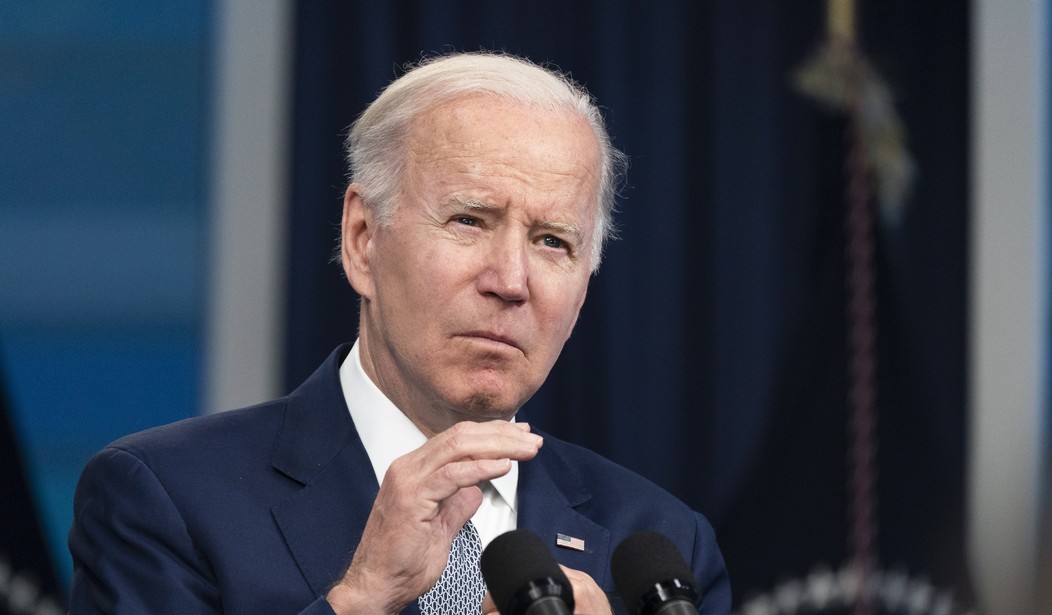Remember when inflation supposedly peaked this spring? The Bureau of Labor Statistics blew up that fantasy again with its producer-price index (PPI) report this morning. While the year-on-year figure slightly declined from April’s 11% to 10.8% in May, the month-on-month increase in the price of goods jumped to 1.4%:
The Producer Price Index for final demand increased 0.8 percent in May, seasonally adjusted, the U.S. Bureau of Labor Statistics reported today. This rise followed advances of 0.4 percent in April and 1.6 percent in March. (See table A.) On an unadjusted basis, final demand prices moved up 10.8 percent for the 12 months ended in May.
In May, nearly two-thirds of the rise in the index for final demand was due to a 1.4-percent advance in prices for final demand goods. The index for final demand services increased 0.4 percent.
Prices for final demand less foods, energy, and trade services moved up 0.5 percent in May after increasing 0.4 percent in April. For the 12 months ended in May, the index for final demand less foods, energy, and trade services rose 6.8 percent.
In case anyone still wants to make a “peak” argument, consider a couple of points first. First, the month-on-month figure actually increased from last month, and not by an insignificant amount, a point to which we’ll return later. Next, take a look at this chart to see where we’re still heading in the year-on-year measures, especially on goods:

That progression gives no indication of peaking.
Bear in mind, too, that we are now making comparisons to months that had already begun to show significant inflation in 2021, making these figures even worse when compounding effects are taken into account. And in some cases, the inflation makes clear that investment activities are going to get curtailed very soon unless inflation gets back under control.
The list of goods in the report is littered with double-digit percentage increases year on year. Here are some key final-demand figures for year-on-year inflation:
- Foods: 13.0%
- Energy: 45.3%
- Capital investment equipment: 9.3%
- Capital investment equipment, manufacturing: 12.5%
- Goods for export, less food and energy: 10.9%
- Trade services: 13.6%
- Transportation and warehousing: 23.9%
- Construction: 19.0%
- Personal consumption goods: 19.4%
This goes way beyond gas prices, although gas prices certainly infect many of these categories, too. That’s why an effective energy policy is critical to economic management as well as national security, two strategic points that have never penetrated Joe Biden’s skull.
As CNBC points out, the overall year-on-year rate is still near a record, and even without food and energy, prices rose faster than they did the previous month:
The producer price index, a measure of the prices paid to producers of goods and services, rose 0.8% for the month and 10.8% over the past year. The monthly rise was in line with Dow Jones estimates and a doubling of the 0.4% pace in April.
Excluding food, energy and trade, so-called core PPI rose 0.5% on the month, slightly below the 0.6% estimate but an increase from the 0.4% reading in the previous month. On a year-over-year basis, the core measure was up 6.8%, matching April’s gain.
The two PPI measures remained near their historic highs — 11.5% for headline, and 7.1% for core, both hit in March.
The data is significant in that prices at the wholesale level feed through to consumer prices, which are running at their highest levels since December 1981. The consumer price index increased 8.6% annually in May, defying hopes that inflation had peaked in the spring.
However, for some reason CNN calls this result “a slight glimmer of hope.” That’s only true if your glimmer doesn’t get inspected too closely:
A key inflation reading showed a glimmer of hope on Tuesday, revealing a slight slowdown in rising prices — though they remain uncomfortably high.
The Producer Price Index, which measures wholesale prices before goods and services reach consumers, rose 10.8% in May compared to where it stood a year ago, according to data released Tuesday by the Bureau of Labor Statistics.
While that’s down from the revised 10.9% rise reported in April’s reading, it is still high by historical standards. The PPI had not recorded a double-digit increase in data going back to 2009 until this past December.
The problem with comparing only the two months’ reported YoY figures is that it ignores the comparison basis. We don’t compare May to April in YoY; we compare May 2022 to May 2021, when PPI was already well over 6%, as it was in April 2021 too. Even if the YoY inflation rate moderated slightly (by a tenth of a point?), the compounding effect more than eclipses that.
We use the month-on-month measure to compare May to April, and BLS charted that as well. Do you see “a glimmer of hope” here?

Inflation in the month-on-month comparison actually rose in both categories in May. That’s not a glimmer of hope as much as it is the light of an oncoming train. Perhaps CNN should stick to the numbers rather than try to run interference for the White House and Joe Biden.
Update: You can’t get any spinnier than this nonsense from Biden press secretary Karine Jean-Pierre. On CNN last night, Jean-Pierre tried claiming that we’re in “a good historic economic place”:
Karine Jean-Pierre says Biden's $2 trillion stimulus "has put us in a place where we can actually, uh, put us in a place where the American people feel, can, can — can actually — we can take on inflation."
Then she says we're in "a good historic economic place." pic.twitter.com/37rL39LjwD
— RNC Research (@RNCResearch) June 14, 2022
That’s only true if you’re nostalgic for the Jimmy Carter economy. That might explain a few things, actually.







Join the conversation as a VIP Member